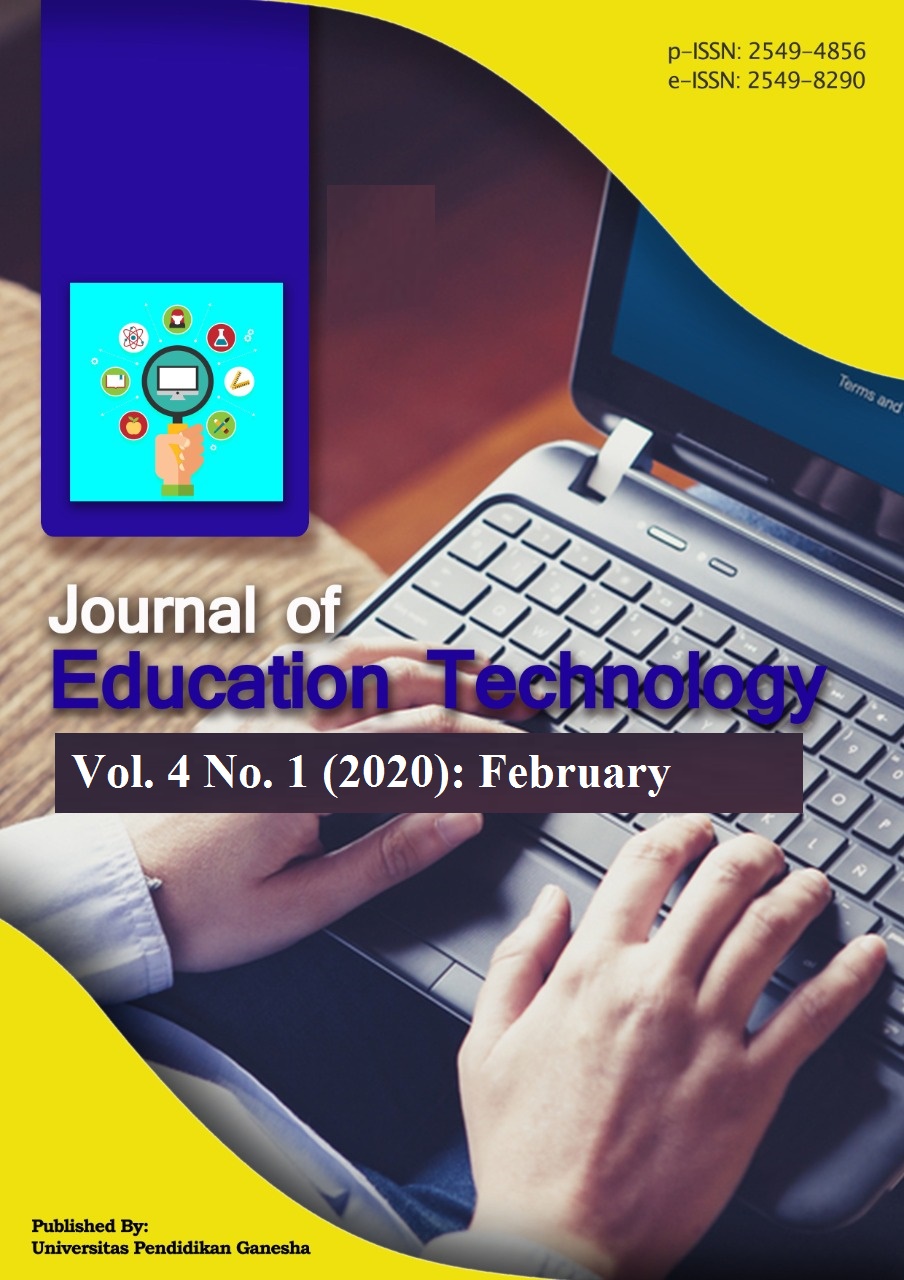Potential Information Media for Village Petang based on Video to Promote Tourism Village
DOI:
https://doi.org/10.23887/jet.v4i1.24093Keywords:
Media, District, Badung Regency, VideoAbstract
This paper provides a template for preparing papers for electronic production of the Journal of Education Technology. A This study aims to create a storyboard, and implement a video entitled Media Information Potential Tourism Village District Petang Badung Regency. The method used in making the Potential Information Media for Tourism Village in the District of Petang in Badung Regency is Non Linear (Computer or Digital), where this method uses tools such as a computer as an editing tool so that the editing process becomes more maximal. Experiments conducted by the author whether the video has gone according to the storyboard, Video Media Information Potential Tourism Village District Petang Badung District lasts 8 minutes. Implementation of the Material Expert Test to see whether the data and content applied to the video are correct with existing data or not. 85% of the results obtained from the Expert Test Material means that the video is Very Good to use. Implementation is carried out in the Media Expert Test to see whether the video can be used or not. 72.25% results means the video is good to use. The benefit of the Potential Information Village for Tourism Village in Petang Sub-District, Badung Regency is that the community can know about Petang Sub-district and the tourism potential contained in the Petang District in Badung Regency.
References
Ardianto, H., 2016, Jurnal yang berjudul “Perancangan Video Promosi ”Mengenal Sejarah di atas Rel”. Tersedia pada http://repository.uksw.edu/bitstream/123456789/10465/2/T1_692011041_Ful%20Text.pdf.
Fennel, 2016. Teori Desa Wisata, http://desawisatakotagede.blogspot.com/2016/01/teori-desa-wisata.html?m=1.
Maryati dan Purnama, 2013, Produksi Video KlipMultiplekLagu, https://ijns.org/journal/index.php/ speed/article/download/1064/1052.
Permana, A.A.J., Kertiasih, N.K., Budhayasa, I.P,2017, Jurnal yang berjudul “Video ProfilSebagaiSaranaPromosiEfektifDalamMenunjangEksistensi Program StudiManajemenInformatika”, https://ejournal.undiksha.ac.id/index.php/JST/article/view/10705.
Rusti, S.C, Penelitian Pengembangan (Research and Development/ R&D), http://shilviacitrarusti.blogspot.com /2012/04/penelitian-pengembangan-r.html.
Saputra, A.P.H, 2011, Pengertian Video, http://putraarifxmmb.blogspot.com/2011/02/pengertian-video.html.
Sari, K.N.W., Tugas Akhir yang berjudul “Video Promosi Desa Bali Aga SCTP”.
Sugiyono, 2008, Uji Validitas, http://repository.upi.edu/5830/6/S_PEK_0906478_Chapter3.pdf
Wahyudi, J.B, 2004, Pengertian Editing, http://sieditor.blogspot.com/2012/03/pengertian-editing.html
Downloads
Published
How to Cite
Issue
Section
License
Authors who publish with the Journal of Education Technology agree to the following terms:
- Authors retain copyright and grant the journal the right of first publication with the work simultaneously licensed under a Creative Commons Attribution License (CC BY-SA 4.0) that allows others to share the work with an acknowledgment of the work's authorship and initial publication in this journal.
- Authors are able to enter into separate, additional contractual arrangements for the non-exclusive distribution of the journal's published version of the work (e.g., post it to an institutional repository or publish it in a book), with an acknowledgment of its initial publication in this journal.
- Authors are permitted and encouraged to post their work online (e.g., in institutional repositories or on their website) prior to and during the submission process, as it can lead to productive exchanges, as well as earlier and greater citation of published work. (See The Effect of Open Access)


















